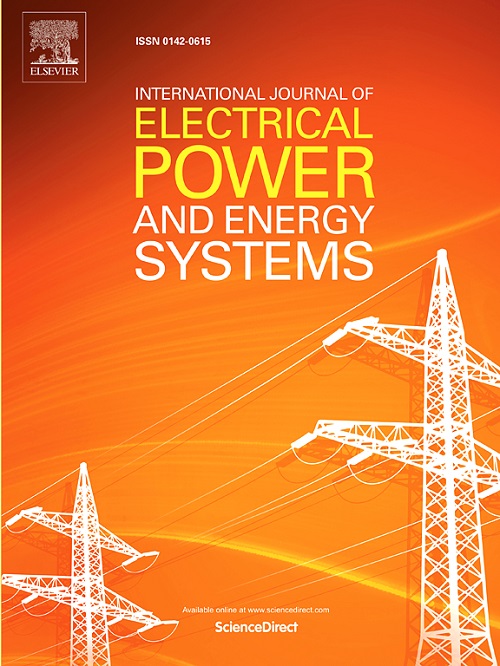A load margin calculation method considering optimized reactive power support
IF 5
2区 工程技术
Q1 ENGINEERING, ELECTRICAL & ELECTRONIC
International Journal of Electrical Power & Energy Systems
Pub Date : 2025-05-03
DOI:10.1016/j.ijepes.2025.110706
引用次数: 0
Abstract
With the development of modern low-carbon power systems, emerging ubiquitous reactive power supply gets more attention in improving power transmission capability. However, reactive power optimization for traditional and emerging forms of reactive power sources is ignored in conventional methods to calculate load margin (LM), which could cause conservative results or even decision-making misplay. Accordingly, this study proposes an improved LM calculation model incorporating optimal reactive power flow (ORPF) and continuation power flow (CPF) models, abbreviated as ORCPF. An approximate linear mixed-integer ORPF is established and integrated into Newton iterations and predictor–corrector steps. The ORPF model involves the Jacobian Matrix as the linearization of power balance relations and generates an approximate optimal solution in which the errors are corrected by following Newton iterations. A constraint interval adjustment scheme is presented to guarantee the errors under control. Meanwhile, the proposed step size control and rollback framework ensure robust iteration and accurate calculation for CPF. Employment of the LU decomposition method allows the CPF predictor coupling with the sensitivity calculation of voltage to reactive power changes (VQ Sensitivity), decreasing the computational burden in identifying the limit-induced bifurcation (LIB). The included case studies based on four test systems demonstrate the effectiveness of the proposed approaches.
一种考虑优化无功支持的负荷余量计算方法
随着现代低碳电力系统的发展,无处不在的无功电源在提高输电能力方面受到越来越多的关注。然而,传统的负荷裕度(LM)计算方法忽略了传统和新兴形式无功电源的无功优化问题,导致计算结果保守甚至决策失误。因此,本研究提出了一种改进的LM计算模型,该模型结合了最优无功潮流(ORPF)和连续潮流(CPF)模型,简称ORCPF。建立了近似的线性混合整数ORPF,并将其集成到牛顿迭代和预测校正步骤中。ORPF模型将雅可比矩阵作为功率平衡关系的线性化,生成近似最优解,并通过牛顿迭代修正误差。提出了一种约束区间调整方案,以保证误差在控制范围内。同时,所提出的步长控制和回滚框架保证了CPF迭代的鲁棒性和计算的准确性。利用LU分解方法,CPF预测器可以与电压对无功变化的灵敏度计算(VQ灵敏度)相耦合,从而减少了识别极限诱导分岔(LIB)的计算负担。所包含的基于四个测试系统的案例研究证明了所提出方法的有效性。
本文章由计算机程序翻译,如有差异,请以英文原文为准。
求助全文
约1分钟内获得全文
求助全文
来源期刊
CiteScore
12.10
自引率
17.30%
发文量
1022
审稿时长
51 days
期刊介绍:
The journal covers theoretical developments in electrical power and energy systems and their applications. The coverage embraces: generation and network planning; reliability; long and short term operation; expert systems; neural networks; object oriented systems; system control centres; database and information systems; stock and parameter estimation; system security and adequacy; network theory, modelling and computation; small and large system dynamics; dynamic model identification; on-line control including load and switching control; protection; distribution systems; energy economics; impact of non-conventional systems; and man-machine interfaces.
As well as original research papers, the journal publishes short contributions, book reviews and conference reports. All papers are peer-reviewed by at least two referees.

 求助内容:
求助内容: 应助结果提醒方式:
应助结果提醒方式:


